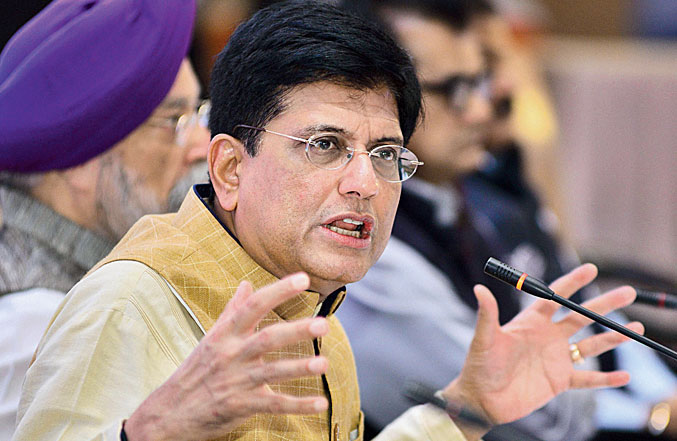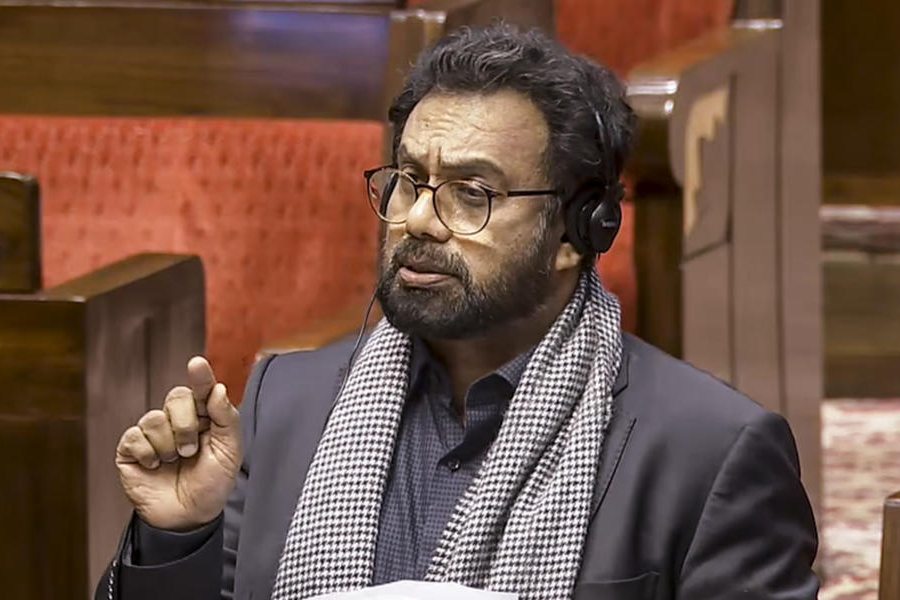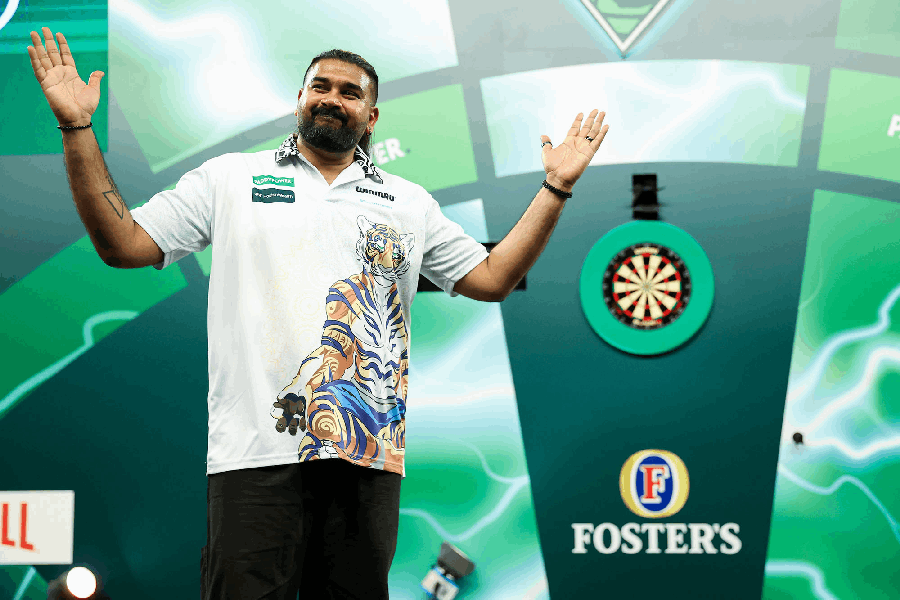The jokes have been pouring onto Twitter, Facebook and Instagram at cyber-speed, forcing railway minister Piyush Goyal to admit that he got his science wrong about Einstein not needing mathematics to work out the Theory of Relativity.
A day later came a second much bigger apology when he admitted that he had bungled badly by saying that Einstein discovered gravity, while speaking to exporters at a Board of Trade meeting in Delhi.
The honour for that, as every ashrama child knows, belongs to Sir Isaac Newton who not only discovered gravity but, also in the process created a new field of mathematics — integral calculus. Without integral calculus he couldn’t have worked out the exquisite scientific mysteries posed by how gravity worked.
Goyal had clearly bungled his science and his scientists but he may not have been as far off the mark as the Twitterati were quick to presume.
Einstein built on Newton’s discoveries and also demonstrated that the Theory of Relativity was needed to fully explain the workings of gravity, time and space. He, too, needed complicated mathematics to formulate his work.
But both Newton and Einstein didn’t start with mathematical formulae in their quests for gravity. Far from it, they started out with observations that they attempted to formulate into scientific theories.
Einstein, in particular, carried out what he called Gedanken experiments, which translates into English as thought experiments. Even as a 16-year-old, Einstein imagined himself chasing a beam of light. What, he wondered, would happen if he chased a light beam and actually caught up with it? Would he then be able to view light frozen in space?
So, strictly speaking, Goyal may have had a point when he said that Einstein didn’t start out with mathematical formulae.
Mathematics was a tool for Einstein, just as language was a tool for Shakespeare. His argument could be redefined as saying: We have a target of a $5-trillion economy and we will figure out a way to get there and stop totting up the percentage points needed to get there. Or to use his exact words: “Those (sic) maths have never helped Einstein discover gravity (sic). If he had only gone by structured formulae and what was past knowledge I don’t think there would have been any innovation in this world.”
Goyal may also have been right in another sense. Einstein did not use conventional mathematics or mathematics as we know it.
The reasons are a little difficult to follow.
A German mathematician, who became Einstein’s walking companion in Princeton, Kurt Goddel delivered one of science’s great googlies. Statements about numbers, he said, may be true but cannot proven within the system. That meant a large part of science could become null and void. Einstein was too much of a genius to be easily stymied. He showed the world the way out.
He took the help of another German and used an experimental mathematics called Riemann algebra and got round the conundrum.
Of course, the minister did make a giant blunder in saying Einstein discovered gravity. But if we want to cut Goyal some slack, we could note that gravity was a crucial part of Einstein’s Theory of Relativity. In fact, Einstein plugged many gaps that were unexplained in Newton’s theory.
Goyal’s biggest failing and why he became such a target for Twitter jokesters was because he, like many others in the government, is reluctant to admit that the economy is faring poorly.
Finance minister Nirmala Sitharaman has, for instance, been reduced to blaming millennials who take taxi services like Ola and Uber for the nosedive in automobile sales. Goyal was still being panned by the Twitterati two days after his remarks.
Goyal also broke one cardinal rule: when you’re in a hole, don’t dig yourself in deeper. Later the same evening, he talked to a news agency and attempted to set the record straight. He insisted he had been trying to “encourage and enthuse the exporter community” to reach a $1-trillion export target. He added: “If we live in the past, we will never be able to make huge changes, never be able to achieve very ambitious goals.” It was only a full day later that he admitted he had got the scientists wrong.
Did those efforts at clarification clear the air? Unfortunately, for Goyal, it didn’t appear to have much impact. But then perhaps politicians shouldn’t venture too far into the realms of science.
Politicians and science have an uneasy relationship. Narendra Modi claimed that Ganesh, a mythical god, proved that plastic surgery was invented in ancient India. Remember also Rahul Gandhi and the escape velocity of Jupiter which was mocked for many moons after it had been uttered. Modi’s attempt to grandstand the moon mission did not also go down particularly well.
Only one politician, a parivar member at that, has been able to score a debating point.
Murli Manohar Joshi chided the Indian mathematicians for ignoring Hindu mathematics. Support came from an unusual quarter. Amartya Sen at Harvard endorsed Joshi and said that traditional mathematics should be part of the curricula. But then Joshi was a bonafide physicist. He taught at Allahabad, the city where resides India’s Nobel hopeful Asoke Sen resides. Few also know that Joshi learnt his trade from arguably the greatest physicist India has produced. Young Joshi, then too poor to afford shelter or meals, stayed at the Dhaka home of S.N. Bose. In proper Hindu tradition, Joshi cooked for his mentor and even washed what Nirmala Sitharaman would call inner wear.
In return, Bose gave him food, lodging and tuition.
Joshi also had a ringside view of Indian science’s proudest moment. When Einstein explained gravity with, the fresh from the oven, theory of relativity, story has it that only four people in the world could fathom what was Einstein was up to.
Joshi’s tutor was one of them. The insolent Bengali, surprise, surprise, found holes in Einstein.
He did something better; he even wrote a paper correcting Einstein’s errors. The unsolicited manuscript was dispatched to Berlin. The rest was history. Einstein himself translated the paper into German. The paper, now famous as the Bose-Einstein statistics, was published by Berlin University.
The byline of the paper read: Professor A Einstein, University of Berlin and Professor S.N. Bose, University of Dacca.
A star was born, there and then.
The paper led to the staggering discovery of a fifth state of matter , the Bose -Einstein condensate, adding an Indian dimension to
the four - solid, liquid, gas and plasma - already known.










